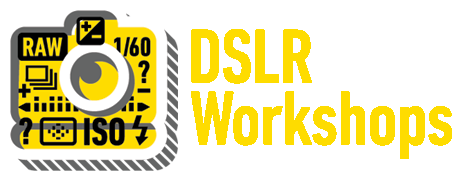You probably don’t need to read this article because you already shoot in RAW mode on your DSLR. And I’m sure you’re thinking, “Are there really people that still shoot only JPEGs?” Crazy, isn’t it? You’re not still reading this, are you? Oh no, don’t tell me you’re not shooting RAW files. Have a seat and let’s talk.
A RAW File (NEF files on Nikon and CR2 files on Canon) is a big scary mass of information (BSMI) (strictly my own nomenclature so don’t Google it), which if not understood can sit on your computer for long periods of time without ever turning into easy-to-work-with images. I certainly understand why some people might be scared off by them. But these BSMI are the best feature your DSLR has for proper exposure, if you just give them a chance!
So what is a RAW file? Simply put, a RAW file is the unprocessed data captured by your sensor when you take a picture. This data can all be saved in a RAW file (which leads to a BSMI), or you can forego saving all of that data by compressing the information into a JPEG which is about 1/4th the size of the RAW file. This means that you are throwing away 3/4th of your image data. Sounds like a lot doesn’t it? (It is!) The benefits of RAW files are in your ability to manipulate the exposure and appearance of the image and not in having a file that you can print bigger. In other words, a RAW file and JPEG will look the same—until you try to manipulate them. That’s when the JPEG will reveal itself as inferior.
Benefits of saving RAW files in camera:
- You can save a greater range of exposure. Did you underexpose a few shots when you were in Australia? With RAW you can just turn your exposure up in an instant. With a JPEG, it’s time to book another flight back or live with an underexposed image. Sure, you can do a little tweaking with a JPEG (and I emphasize “a little”).
- RAW files allow you to preserve color correction information that would normally be discarded by JPEG compression, so you don’t need to worry about white balance before each photo.
- RAW files have a greater tonal range. Not to simplify it too much, but would you rather color in a drawing with a box of 8 crayons or a box of 512 crayons?
- When you make changes to your RAW file, you’re only changing the settings applied to that file and when you export a JPEG from your RAW file, those settings are applied. This means you will still have your original file down the line and not a changed or degraded version.
- You can export as many JPEGs as you want from your RAW file. Did an editor call and ask you if you have one that was exposed lighter? Turn up the exposure on the RAW file and export another JPEG.
- Want to create an HDR (High Dynamic Range) image but only have one photo to work with? Export three different versions from your RAW image: one light, one mid and one dark image. Sandwich the layers in Photoshop and make an HDR from one RAW image!
Benefits of saving JPEG files in camera:
- JPEGs are smaller.
- You can fit more JPEGs on a memory card.
- You can take more rapid fire consecutive images
- They take up less space on your computer.
- They’re easier to upload and email to people.
Did I mention they’re smaller? I think you get my drift. JPEGs are bad. And yes, I used to shoot JPEGs, so I am speaking from experience, but when I shot JPEGs, my Nikon D100, which was released in 2003, had a buffer of 2 RAW files. That means that I was only able to take two rapid fire exposures before the camera needed time to process them, which meant a delay until the buffer had room to take another photo. It takes an eternity for the buffer to empty—longer in some cases. Once I upgraded to a D200 I explored RAW files a bit more and was hooked. Now I own a D700 and have a buffer of 17 RAW files and rarely hit that ceiling. I will admit that shooting RAW has made me a lazier photographer exposure wise, since there was a time when I labored over metering multiple zones of a scene to ensure a perfect 4×5 transparency. (So, I believe I’ve earned a little laziness.)
With all of the benefits, what’s holding you back from shooting RAW files? “Memory is too expensive.” Not anymore. You can buy an 8 gigabyte card for $40 or less. “RAW files are too hard to print or email.” I’ll give you that one. You can’t send a RAW file to most labs to print or email them out to your friends, so they can be much harder to handle, but with the popularity of DSLRs, even free programs like Picasa are able to import RAW files, and they export easy-to-work-with JPEGs that you can send to a lab, email, or post to Facebook. But there’s one difference… they’ll be properly exposed. And, isn’t being able to rescue those five perfect images you took on your once-in-a-lifetime trip worth a $40 memory card and a little extra work?


